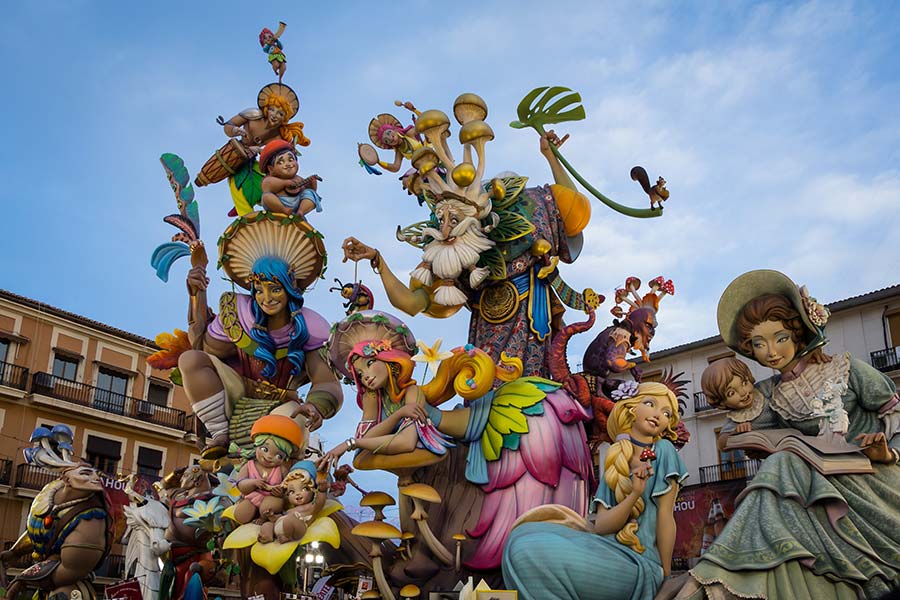Fallas are by excellence Valencia’s most characteristic holiday, also known as the Fire party and it takes place from 15 to 19 March. Big monuments filled with satiric connotations rise throughout the city, fireworks and endless bursts that make the whole city tremble, along beautifully illuminated streets which totally transform Valencia for one week. If you are willing to live this experience there are a series of things you must know.
¿What is its origin?
There are several theories that explain the origin of Fallas but non of them have been demonstrated. The most popular between them derives from that of the carpenters’ guild, whose patron is 19 March. Formerly, to celebrate this, they burnt the ‘parot’ in front of their workshops, which is the stick that held the lamp with which they worked all night long. Over time, junk was added to the ‘parot’ and with this, the origin of Fallas.
Own jargon used
There are several words that you must know if you are going to be in Valencia during 15-19 March. Let’s start! Although the word ‘fallas’ is used to talk about the holiday, it actually refers to the monuments themselves. ‘La plantá’ is the act of installing ‘la falla’; ‘El ninot’ represents each human figure that form ‘la falla’. Lastly, ‘la mascletá’ refers to the pyrotechnic show that takes place in the Town Hall Square every day at 14:00 since 1st March.
Every street is illuminated
When the night falls in Valencia during fallas the city doesn’t go dark due to the millions of bulbs that illuminate its streets. The illumination is so amazing it will leave you without words. Normally the best illuminated streets are found in the Ruzafa neighborhood where many fallas of the special section are located.
La despertá
Even if you go late to sleep, you will wake up early in the morning due to the ‘despertá’. Every casal fallero (group of people who are part of a specific falla) has the tradition of going around the city with music bands and firecrackers at 8 a.m. If you don’t want to wake up this early we recommend you including some earplugs in your suitcase.
In Valencia we don’t sleep
After the fireworks night show at 24:00 at ‘Paseo de la Alameda’ , Valencians enjoy the parties that each falla celebrates in their ‘casal’, which normally have free entrance. Likewise, the city council also organizes first level concerts in the river channel area.
The ‘ofrenda’ tradition
The most outstanding and traditional act of fallas is the offering to the virgin of the destitute. The act consists of a floral offering, where the bouquets will form the cape with which they cover the virgin. For two days, falleros and falleras go to ‘Plaza de la Virgen’ dressed up in the typical fallas costumes to offer these flowers to the Virgin. The cape reaches a height of 15 meters. The offering starts at noon on the 17th and ends on the 18th at 10pm.
La nit del foc
March 18 is the most impressive night of the whole holiday, and without doubt it should be marked in your agenda: it announces the prelude to the ‘cremá’ (when the monuments are burnt on the last night). This night consists of endless parades, dances, people in disguise that culminates with a spectacular fireworks display at 12.00pm.
Remember that…
Every year in Valencia around 700 fallas are planted, so in order to fully enjoy and take the most of this holiday we recommend you to bring confortable shoes.
